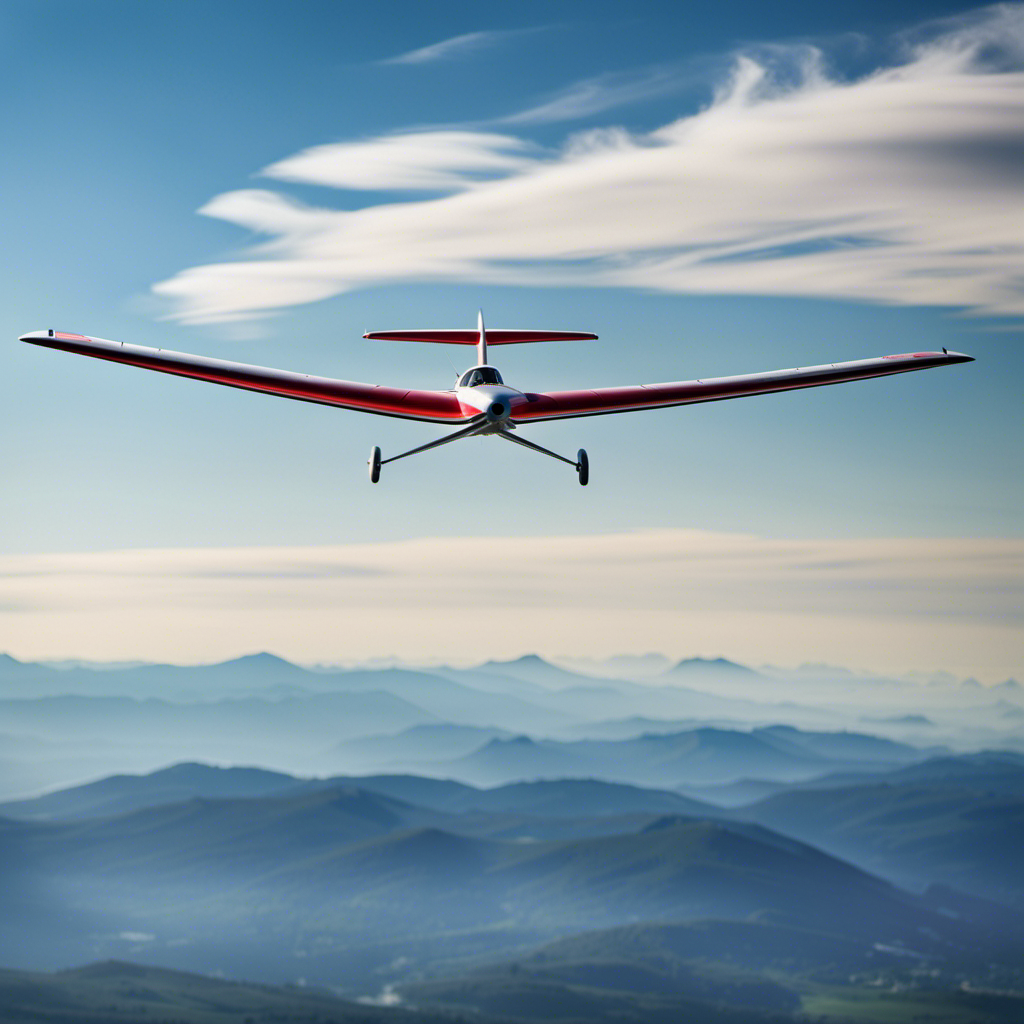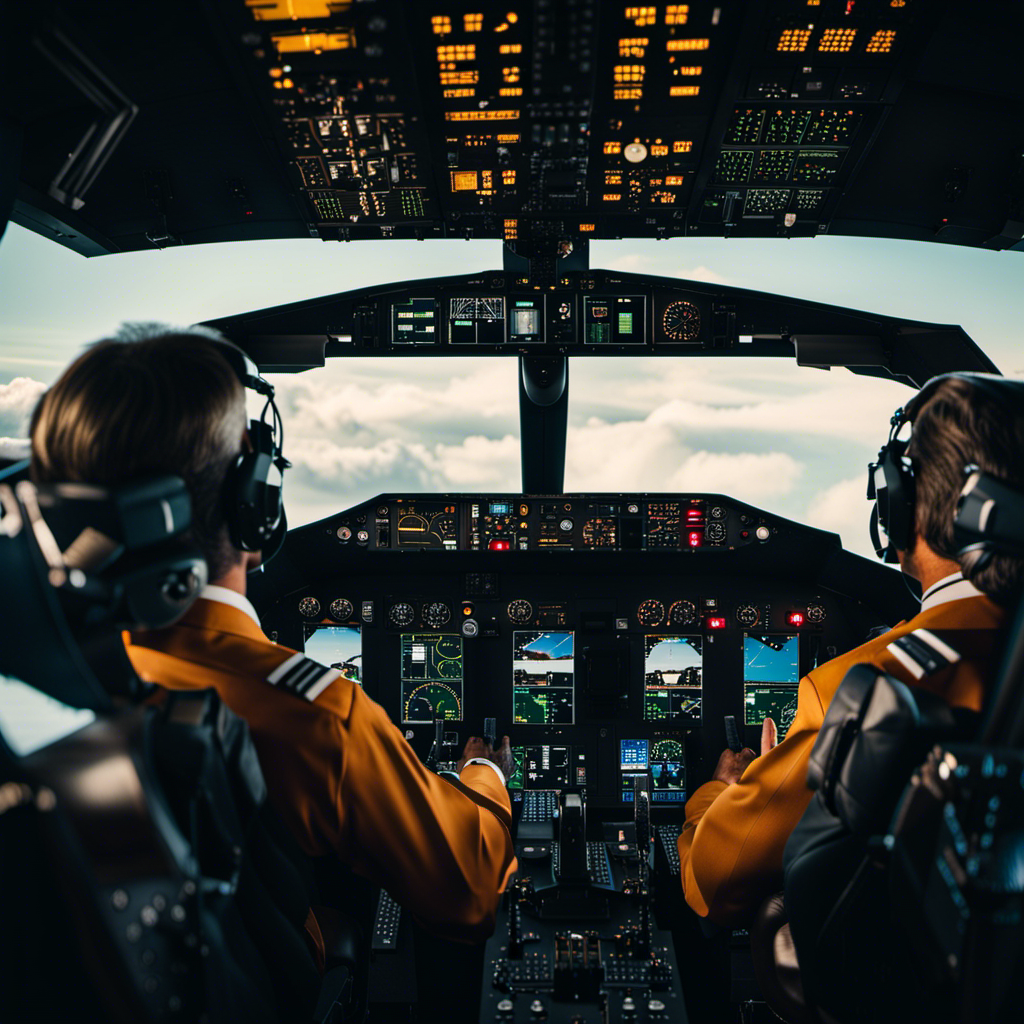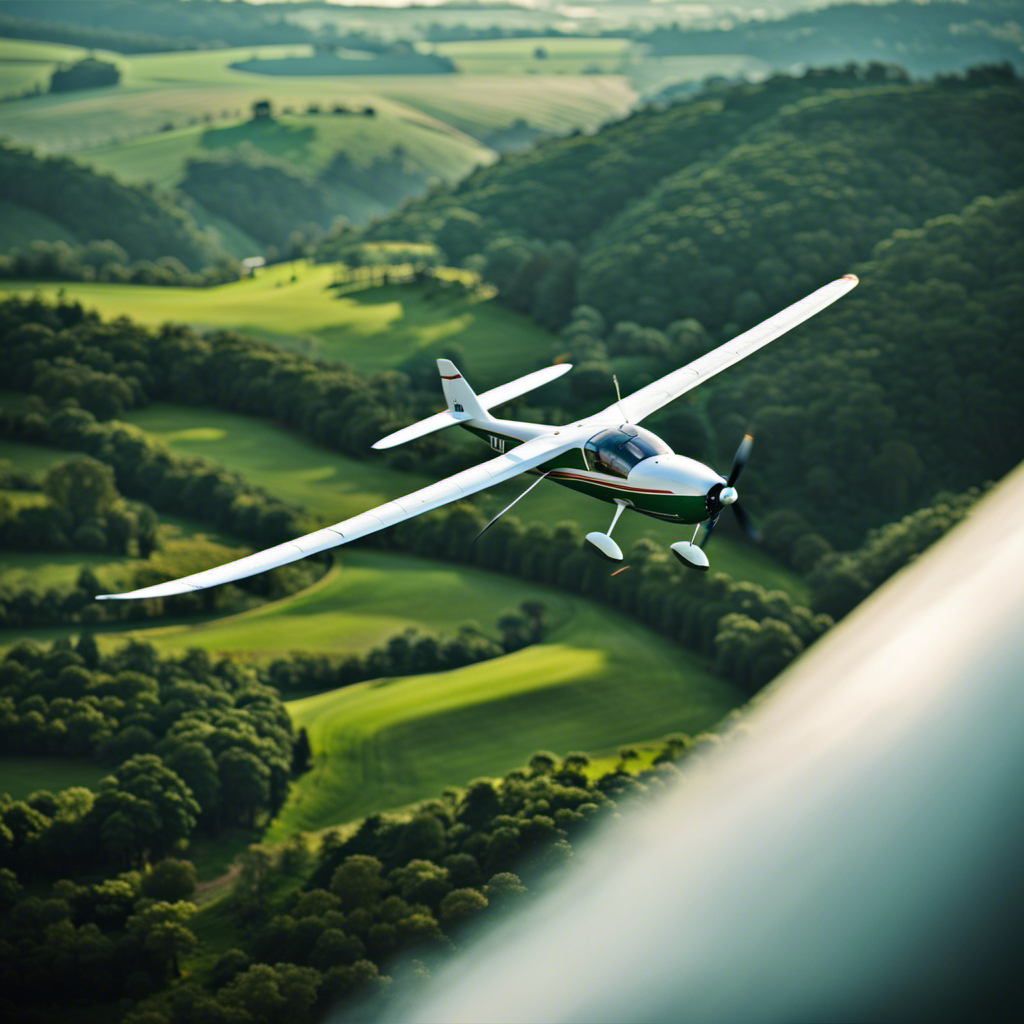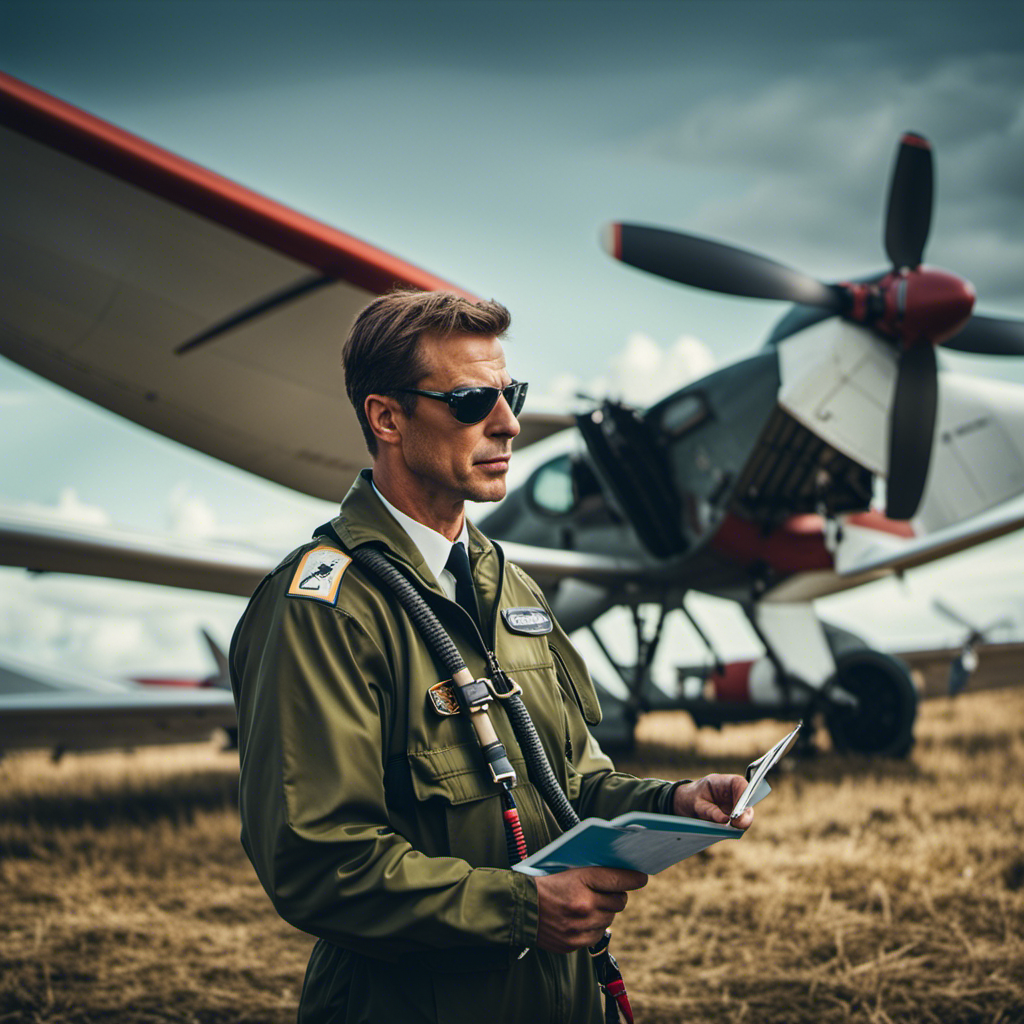Have you ever dreamed of being a pilot and soaring through the sky in a glider? Wondering how much it will cost to make that dream a reality? Look no further!
In this comprehensive guide, we’ll break down the factors that influence sailplane prices, compare the pros and cons of buying new or used, explore additional equipment and maintenance costs, and provide tips for saving money.
Get ready to take flight without breaking the bank!
Key Takeaways
- There are different types of sailplanes available, including training sailplanes, high-performance sailplanes, aerobatic sailplanes, and competition sailplanes, which can affect their prices.
- Factors that affect sailplane prices include the age of the aircraft, wear and tear, technological advancements, market demand, brand reputation, availability of spare parts, and overall condition.
- When deciding between buying a new or used sailplane, consider the pros and cons of each. Buying new offers the latest technology and control over maintenance but comes with a higher price and rapid depreciation. Buying used can be cost-effective and offer a wide range of models with upgrades included, but may come with higher maintenance costs and hidden damage or wear.
- When purchasing a used sailplane, it is important to thoroughly inspect maintenance records, look for regular inspections and routine maintenance, evaluate recurring issues or patterns, and consider additional equipment and accessories such as avionics, safety equipment, and spare parts.
Types of Sailplanes
There’s a wide range of sailplane types available for aspiring pilots to choose from. Each type has its own unique characteristics and performance capabilities, allowing pilots to select the one that best suits their needs and preferences.
For beginners, there are training sailplanes that are designed to be stable and easy to handle. These sailplanes typically have a lower glide ratio, which means they require less skill to fly efficiently.
As pilots gain experience, they can transition to high-performance sailplanes that offer greater speed and agility. These sailplanes have a higher glide ratio, enabling them to cover longer distances with minimal loss of altitude.
Other types of sailplanes include aerobatic sailplanes for those interested in performing stunts and competition sailplanes for pilots who want to participate in racing events.
Understanding the different types of sailplanes is essential when considering factors that affect sailplane prices, such as performance capabilities and specialized features.
Factors Affecting Sailplane Prices
One of the main factors that influence sailplane prices is the age of the aircraft. As sailplanes age, their value tends to decrease due to wear and tear, technological advancements, and changes in market demand. Data shows that newer sailplanes generally command higher prices compared to older ones.
This is because newer models often come with advanced features, improved safety standards, and better performance capabilities. Additionally, newer sailplanes are more likely to be in pristine condition, requiring less maintenance and repairs.
However, it’s important to note that while age is a significant factor, it is not the sole determinant of sailplane prices. Other factors such as brand reputation, availability of spare parts, and overall condition also play a crucial role.
This leads us to the next section, where we will explore the advantages and disadvantages of purchasing new versus used sailplanes.
New vs. Used Sailplanes
When considering purchasing a sailplane, it’s important to weigh the pros and cons of buying new versus buying used.
Buying new allows you to have the latest technology and guarantees the condition of the aircraft, but it comes with a higher price tag.
On the other hand, buying used can save you money, but it may require more maintenance and could come with hidden issues.
To ensure a successful purchase of a used sailplane, it’s important to follow some key tips. These include thoroughly inspecting the aircraft, reviewing maintenance records, and consulting with experts in the field.
Pros and cons of buying new
If you’re considering buying new, you should weigh the pros and cons of investing in a brand-new sailplane.
One of the main advantages is that you’ll be the first owner, which means you’ll have full control over the maintenance and history of the aircraft.
New sailplanes also come with the latest technology and design advancements, offering improved performance and safety features.
Additionally, you’ll have the peace of mind that comes with a warranty, protecting you from unexpected repairs.
However, buying new can be quite expensive. Sailplanes depreciate rapidly, and the initial investment may not be recouped if you decide to sell in the future.
It’s important to carefully consider your budget and long-term plans before making a decision.
Now, let’s explore the pros and cons of buying used sailplanes.
Pros and cons of buying used
Now let’s delve into the advantages and disadvantages of purchasing a used sailplane.
Buying a used sailplane can be a cost-effective option for aspiring pilots. One major advantage is the lower price tag compared to buying new. Used sailplanes also offer a wide range of models and options to choose from, giving you more flexibility in finding the right fit for your needs. Additionally, used sailplanes often come with upgrades and modifications already installed, saving you time and money on customization.
However, there are some downsides to consider. Used sailplanes may have higher maintenance costs and require more frequent repairs compared to new ones. There is also a risk of hidden damage or wear and tear that may not be immediately apparent.
Nonetheless, with careful research and inspection, purchasing a used sailplane can be a great way to enter the world of soaring.
In the next section, we will provide helpful tips for purchasing a used sailplane.
Tips for purchasing a used sailplane
One tip for buying a used sailplane is to thoroughly inspect the aircraft’s maintenance records. This step is crucial in determining the overall condition and reliability of the sailplane. By reviewing the maintenance records, you can assess whether the sailplane has been well-maintained and if any major repairs or modifications have been made.
Look for regular inspections, routine maintenance, and any repairs or replacements of critical components. Additionally, pay attention to any recurring issues or patterns of maintenance that may indicate potential problems.
Once you have thoroughly examined the maintenance records, you can move on to evaluating the additional equipment and accessories that come with the sailplane, such as avionics, safety equipment, and spare parts.
Additional Equipment and Accessories
When it comes to flying, safety should always be a top priority.
That’s why it’s crucial to have the right safety equipment on hand, such as parachutes and emergency locator transmitters.
Additionally, instruments and navigation aids play a vital role in ensuring accurate and reliable flight data, allowing you to navigate with confidence.
Lastly, having the necessary maintenance and repair tools is essential for keeping your aircraft in optimal condition, ensuring safe and smooth operations.
Safety equipment (e.g., parachutes, emergency locator transmitters)
Safety equipment, such as parachutes and emergency locator transmitters, is essential for sailplane pilots. These crucial tools provide an added layer of protection and can be life-saving in emergency situations.
Parachutes, for instance, allow pilots to safely exit the sailplane if necessary. They are designed to deploy quickly and effectively, ensuring a controlled descent to the ground.
On the other hand, emergency locator transmitters are invaluable in alerting search and rescue teams in the event of a crash or unplanned landing. These devices transmit a distress signal, enabling authorities to quickly locate the downed sailplane and initiate a rescue operation.
When it comes to sailplane safety, investing in reliable parachutes and emergency locator transmitters is paramount.
Now let’s delve into the importance of instruments and navigation aids in sailplane flying.
Instruments and navigation aids
To enhance your flying experience, make sure you have access to instruments and navigation aids. These tools are essential for ensuring a smooth and safe flight. Here are some key items to consider:
- GPS Navigation System: A reliable GPS system will provide you with accurate position information, helping you navigate efficiently and avoid getting lost.
- Altimeter: This instrument measures your altitude above sea level, allowing you to maintain the desired flight level and avoid airspace violations.
- Variometer: A variometer indicates the rate of climb or descent of your glider, helping you locate areas of lift and maximize your flying time.
- Airspeed Indicator: This instrument displays your glider’s airspeed, enabling you to fly within safe speed limits and optimize performance.
Having these instruments and navigation aids at your disposal will greatly enhance your flying experience by providing you with crucial information for a successful flight.
Now, let’s explore the next section about maintenance and repair tools.
Maintenance and repair tools
Having the necessary maintenance and repair tools is essential for ensuring the longevity and performance of your aircraft. By having a well-stocked toolbox, you can address any minor issues that arise during your flights and prevent them from escalating into major problems.
Some key tools that you should have include wrenches, screwdrivers, pliers, wire cutters, and a multimeter for electrical troubleshooting. It is also important to have a torque wrench to ensure that all fasteners are properly tightened according to specifications.
Additionally, having a comprehensive set of aircraft-specific tools will allow you to perform routine maintenance tasks and inspections more efficiently. By investing in the right tools and maintaining them properly, you can save time and money in the long run by avoiding costly repairs and unnecessary downtime.
As you consider the maintenance and operating costs of owning a sailplane, it’s important to take into account not only the initial purchase price, but also the ongoing expenses associated with regular upkeep, inspections, and repairs.
Maintenance and Operating Costs
When it comes to sailplane maintenance and operating costs, you’ll want to consider factors such as inspections, repairs, and fuel expenses. These costs can vary depending on the type and size of the sailplane, as well as the frequency of use. Here are four key points to keep in mind:
-
Inspections: Regular inspections are crucial to ensure the safety and airworthiness of your sailplane. These inspections can range from simple visual checks to more comprehensive examinations of critical components.
-
Repairs: Sailplanes, like any aircraft, may require repairs due to normal wear and tear or unexpected incidents. The cost of repairs can include labor, parts, and any necessary certifications.
-
Fuel expenses: Sailplanes are typically powered by engines or rely on natural energy sources such as thermals. The cost of fuel or energy for powering the sailplane should be factored into your operating costs.
-
Operating fees: Depending on where you fly, there may be additional fees such as landing fees or membership fees for using certain airfields or clubs.
Considering these factors will help you estimate and plan for the maintenance and operating costs associated with owning and flying a sailplane.
Now, let’s delve into the importance of insurance coverage for your sailplane.
Insurance Coverage
If you’re considering owning a sailplane, it’s important to understand the significance of having insurance coverage. Accidents can happen, and having the right coverage can protect you financially. Here is a breakdown of the different types of insurance coverage you should consider:
| Coverage Type | Description |
|---|---|
| Liability | Covers bodily injury or property damage caused by your sailplane. |
| Hull | Covers damage to your sailplane in the event of an accident. |
| Medical Payments | Covers medical expenses for you and your passengers in case of injury. |
| Personal Injury | Provides compensation for lost wages and pain and suffering. |
Having comprehensive insurance coverage gives you peace of mind and ensures that you are protected in case of any unforeseen circumstances. Now that you understand the importance of insurance coverage, let’s explore the various financing options available for purchasing a sailplane.
Financing Options
To finance your purchase, you can explore different options such as loans, leasing, or crowdfunding. Loans are a popular choice among pilots due to their flexibility and availability. Many financial institutions offer aircraft loans specifically tailored to sailplane purchases, with competitive interest rates and repayment terms.
Leasing is another viable option, allowing you to use the sailplane for a fixed period while making regular lease payments. This can be a good solution if you’re unsure about long-term commitment or if you want to try different models before making a purchase.
Crowdfunding has also gained popularity in recent years, with platforms dedicated to aviation projects. Explore these financing options to determine which one suits your needs and budget.
Once you’ve secured financing, you’ll need to consider the training and certification expenses.
Training and Certification Expenses
Training and certification expenses can vary depending on factors such as the flight school you choose and the type of certification you are pursuing. It is important to carefully consider these expenses as you embark on your journey to become a sailplane pilot.
On average, flight schools charge around $100 to $200 per hour for training, which can add up quickly depending on the number of hours you need to become proficient. Additionally, certification fees range from $100 to $500, depending on the type of certification you are pursuing. Remember to factor in costs for study materials, written exams, and practical tests as well.
By understanding the potential expenses involved, you can better plan and budget for your sailplane training and certification journey.
Now let’s explore another aspect of sailplane cost: club memberships and fees.
Club Memberships and Fees
Now that you understand the expenses associated with training and certification, let’s delve into another crucial aspect of sailplane cost: club memberships and fees.
When it comes to sailplane flying, joining a club is a popular option for aspiring pilots. Club memberships typically involve an initiation fee and annual dues, which can vary depending on the club’s location and facilities. Additionally, clubs may charge hourly rates for aircraft usage or offer discounted rates for pre-purchased flight hours. These fees cover maintenance, insurance, and other operational expenses.
To give you an idea of the costs involved, club memberships can range from $500 to $5,000 per year, while hourly rates for aircraft usage can range from $50 to $150. It’s essential to research and compare different club options to find the best fit for your budget and flying needs.
Now that you have a better understanding of club memberships and fees, let’s explore some tips for saving money on sailplane costs.
Tips for Saving Money on Sailplane Costs
If you’re looking to save money on sailplane costs, there are a few key points to consider.
First, budgeting and financial planning can help you track expenses and make informed decisions about where to cut back.
Second, DIY maintenance and repairs can significantly reduce the cost of professional services.
Lastly, exploring sharing ownership or rental arrangements can provide a more affordable way to access a sailplane.
Budgeting and financial planning
When it comes to budgeting and financial planning, you’ll need to carefully consider the costs involved in owning and maintaining a sailplane. To help you get a clear picture of the expenses, here is a breakdown of the key cost factors you should take into account:
| Cost Category | Average Expense |
|---|---|
| Purchase Price | $50,000 – $200,000 |
| Insurance | $1,000 – $5,000 per year |
| Hangar Rental | $500 – $2,000 per year |
| Annual Inspection | $500 – $1,500 per year |
| Maintenance | $1,000 – $5,000 per year |
| Fuel | $30 – $50 per flight hour |
These figures are just estimates and can vary depending on various factors such as the age and model of the sailplane, location, and personal preferences. By understanding these costs, you can make informed decisions and create a realistic budget for your sailplane ownership. When it comes to DIY maintenance and repairs, there are several cost-effective strategies you can employ to keep your expenses in check.
DIY maintenance and repairs
Now that you have a solid understanding of budgeting and financial planning for your sailplane journey, it’s time to explore another cost-saving strategy: DIY maintenance and repairs.
By taking a hands-on approach, you can not only save money but also gain valuable knowledge about your sailplane’s inner workings. Regular maintenance tasks like cleaning, lubricating, and inspecting can be easily done by yourself, reducing the need for costly professional services.
Additionally, learning basic repair techniques can come in handy when minor issues arise. However, it’s important to note that major repairs should still be left to experienced professionals to ensure safety and airworthiness.
By embracing DIY maintenance and repairs, you can significantly cut down on your sailplane expenses and take better control of your flying experience.
Now, let’s delve into the next section about sharing ownership or rental arrangements.
Sharing ownership or rental arrangements
Sharing ownership or rental arrangements can be a great way to reduce expenses and enjoy the benefits of flying without the full financial responsibility. Many aspiring pilots find it challenging to bear the entire cost of owning or renting a sailplane on their own. By sharing ownership or opting for rental arrangements, you can significantly cut down on expenses such as maintenance, insurance, and hangar fees.
Additionally, shared ownership allows you to split the cost of major repairs, upgrades, and annual inspections. According to industry data, the average cost of owning a sailplane is around $30,000 per year, while rental fees range from $100 to $500 per hour, depending on the type and condition of the sailplane.
Collaborating with other pilots or joining a club can provide you with access to a sailplane at a fraction of the cost, making your flying dreams more attainable.
Conclusion
In conclusion, navigating the world of sailplane costs can feel like soaring through a turbulent sky. However, armed with this comprehensive guide, you hold the key to unlocking the secrets of affordability.
By carefully considering the types of sailplanes, weighing the factors affecting prices, and exploring financing options, you can successfully glide towards your dream of becoming a pilot.
Remember, with smart choices and a keen eye for savings, you can conquer the skies without breaking the bank. So spread your wings and let your dreams take flight!









